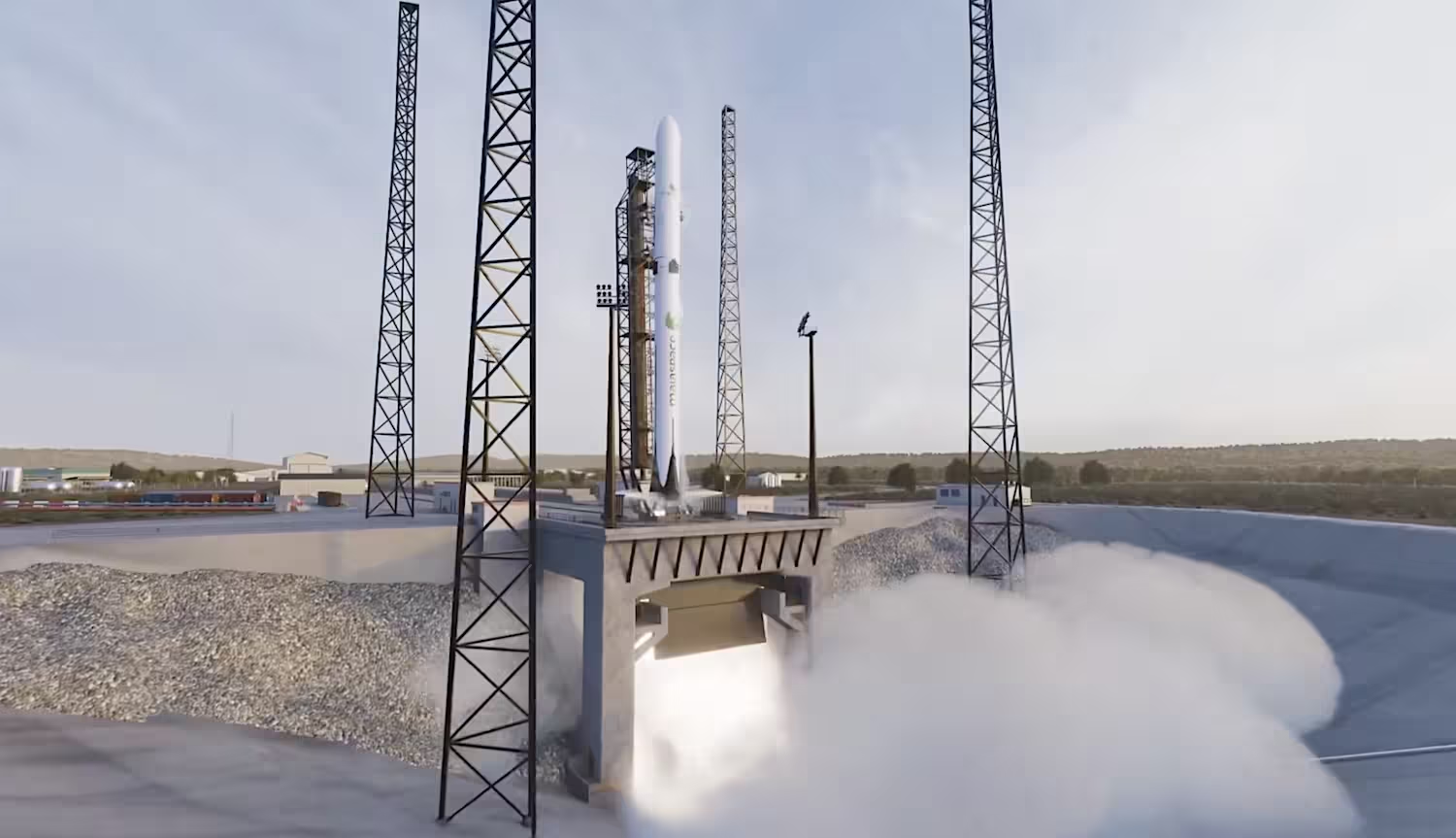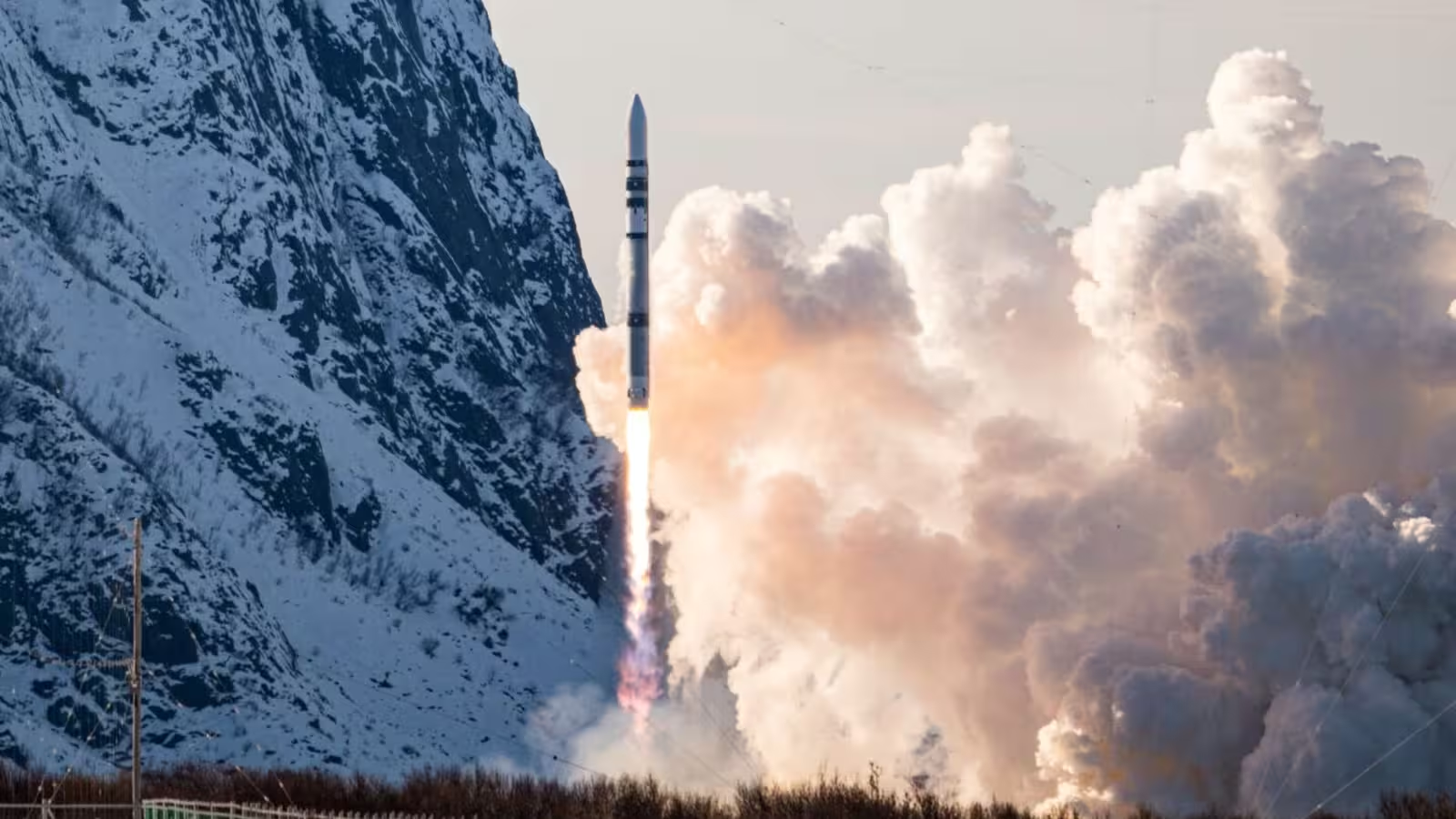11 Minutes
Introduction: Europe’s New Era in Commercial Rocket Launches
The European Space Agency (ESA) is embarking on a transformative mission to diversify and strengthen its access to space. In an ambitious move, ESA has shortlisted five promising rocket startups to compete for a share in up to €169 million (approximately $198 million) in potential funding. This initiative aims to foster alternatives to Arianespace, the long-standing leader in European launch services. The selected companies—Isar Aerospace, MaiaSpace, Rocket Factory Augsburg, PLD Space, and Orbex—represent a new wave of innovation and competition, poised to shake up Europe’s commercial space launch landscape.
Scientific Context: The Evolution of Europe’s Launch Sector
The European launch industry has traditionally been dominated by Arianespace, backed by ESA’s established funding structures and policies such as ‘geographic return,’ which distribute contracts based on member state contributions. While this system supported technological growth and unity, it has also been associated with delays and cost overruns, notably seen in the protracted development of the Ariane 6, whose inaugural flight in July 2024 came years behind schedule.
Now, ESA seeks to refocus: rather than assigning contracts through geographical quotas, it is selecting the most technically and commercially viable startups first, then working with their national governments to secure necessary funding. This competitive approach incentivizes efficiency, technical maturity, and sustainable business models, while aiming to ensure Europe’s independent access to space in an era of rapidly advancing global commercial launch capabilities.
ESA’s Launcher Challenge: Structure, Rationale, and Impact
ESA’s Launcher Challenge will unfold over two main components:
- Launch Services Contracts: Startups will compete to provide launch services for ESA missions scheduled between 2026 and 2030. This direct route to commercial contracts represents a major shift in ESA procurement.
- Demonstration of Enhanced Capabilities: Each selected company will have the chance to showcase upgraded launch vehicles, proving the ability to carry heavier payloads through at least one demonstration mission.
The allocated cap of €169 million per company covers both elements of the competition. Although none of the five are guaranteed contracts at this stage, they enter negotiations with their respective governments and ESA, awaiting final funding decisions at the agency’s ministerial council meeting in November. ESA’s decision to describe the startups as "preselected challengers" underlines the meritocratic and competitive nature of the process, which aims to accelerate commercialization, lower launch costs, and safeguard Europe’s sovereignty in space exploration.
The Five European Launcher Startups: An Overview
ESA’s selection reflects a broad geographic and technological diversity, focusing primarily on companies developing small launch vehicles targeting the burgeoning small satellite market. Here is a closer look at each contender, ordered by their current readiness to achieve orbital launch capability.
Isar Aerospace (Germany): Leading the Race for Orbit
Isar Aerospace, headquartered in Munich, stands out as Europe’s most advanced and well-capitalized rocket startup. Since its founding in 2018, Isar has raised over €550 million ($645 million), topping the funding charts among its peers. The company’s Spectrum rocket completed its maiden launch attempt from Norway in March 2024, marking the first orbital-class launch pursuit by a European startup—though the mission ended in failure moments after liftoff.
Spectrum is a two-stage, propane and liquid oxygen fueled rocket, designed to deliver up to 1 metric ton to low-Earth orbit, or 700 kilograms to sun-synchronous orbit (SSO). At 28 meters tall, Spectrum embodies Isar’s focus on reliability and swift turnaround. The company is currently assembling its next two rockets, targeting a return to the launch pad at Andøya Spaceport in northern Norway by late 2025.
“Through this initiative, ESA is taking decisive steps towards commercialization and expansion of launch services, which are essential for ensuring sovereignty in space,” Isar stated philosophically on X (formerly Twitter), highlighting the broader contribution these startups bring to the future of European access to space.
MaiaSpace (France): Building Europe’s Reusable Rocket
Paris-based MaiaSpace is breaking new ground in the European context with a strong push toward reusable rocket technology. As a wholly owned subsidiary of ArianeGroup (the parent of legacy launch provider Arianespace), MaiaSpace benefits from heritage experience and industrial support. Established in 2022, MaiaSpace received a €125 million ($147 million) investment from its parent group to spur development of the Maia rocket.
Maia is expected to stand 50 meters tall with two stages powered by methane and liquid oxygen engines. In disposable mode, it will be able to carry up to 1.5 metric tons to SSO. Uniquely, Maia’s first-stage booster will be designed for recovery and reuse, landing on a floating offshore barge in a fashion reminiscent of SpaceX’s Falcon 9. The inaugural Maia launch is set for as early as 2025 from the repurposed Soyuz pad at the Guiana Space Centre in South America, leveraging existing infrastructure and the maturing Prometheus engine—a joint development with ESA.
MaiaSpace’s strong financial position, deep industrial ties, and adoption of advanced reusability concepts place it among the frontrunners for transforming Europe’s competitive position in the global launch market.
Rocket Factory Augsburg (Germany): Aiming for Reliability and Volume
Rocket Factory Augsburg (RFA), based in Bavaria, has set its sights on high-frequency, modular launches catered to commercial and institutional needs. RFA’s principal project, the RFA One rocket, is a three-stage launcher intended to deliver up to 1.3 metric tons to SSO, targeting a range of Earth observation and small satellite missions.
Despite ambitions for a 2023 debut, the company faced setbacks when a fire destroyed the booster stage during a static test at Scotland’s SaxaVord Spaceport. RFA is regrouping, having qualified its second and third stages, and is preparing another booster for static fire testing. With total disclosed funding near €100 million, the company has support but lags behind Isar and MaiaSpace in developmental maturity and demonstrated readiness. The company’s initial operational capability remains tentatively scheduled for late 2025.

PLD Space (Spain): Spain’s Commercial Launch Pioneer
PLD Space, headquartered in Elche, Spain, has carved out a niche in suborbital and small orbital launches. In October 2023, PLD successfully launched Miura 1—a suborbital liquid-propelled test rocket—from southern Spain, proving key technologies for its forthcoming orbital launcher, Miura 5.
Miura 5 is envisioned as a partially reusable rocket capable of lifting up to 540 kilograms to sun-synchronous orbit. The rocket’s maiden launch is scheduled for 2025 from French Guiana, following recent agreements with the French space agency CNES to begin pad construction. With over €160 million ($188 million) in funding—though notably, half consists of loans—PLD Space continues to advance Europe’s access to small launch services, positioning itself as the Iberian Peninsula’s leading contender in the commercial launch market.
Orbex (UK): Aiming for Sustainable Small Launch Access
UK-based Orbex brings innovation grounded in environmental sustainability. The company’s primary vehicle, Prime, has been in development for several years but is yet to complete a launch. Designed to carry up to 180 kilograms to low-Earth orbit, Prime will launch from the SaxaVord Spaceport in Scotland’s Shetland Islands, where Orbex recently shifted its pad construction efforts.
Orbex has publicly discussed plans for a larger, medium-lift rocket called Proxima, intended to better serve Europe’s institutional market. To date, the company has raised around £130 million ($177 million), leaving it the most financially constrained among ESA’s launcher challenge finalists. Nevertheless, its inclusion adds crucial geographic diversity, potentially prompting further UK government engagement in the European space sector.
Key Criteria for ESA Selection
ESA’s rigorous selection process was shaped by multiple evaluation metrics:
- Technical Maturity: How advanced and tested are the rockets and their key systems?
- Business Sustainability: Does the company have a viable business plan backed by real investment?
- Alignment to ESA’s Institutional Market: Can the company meet the payload needs of European missions?
- Compliance with Procurement Rules: Are procurement and development processes transparent and robust?
The result is a cohort of startups positioned to potentially transform Europe’s presence in the global launch market, with each company cultivating partnerships, supply chains, and launch facilities that may catalyze regional space ecosystems.
Broader Implications: Why the European Launcher Challenge Matters
This challenge represents more than just new contracts for startups—it is a strategic step toward European sovereignty in space. Globally, the commercial launch sector is thriving, with US private companies such as SpaceX and Rocket Lab demonstrating the value of reusable rockets, rapid production, and flexible business models. Europe’s drive to nurture a homegrown cadre of rocket companies aims to stimulate similar innovation, reduce dependency on legacy systems, and improve commercial competitiveness.
Moreover, the focus on small launch vehicles reflects a major trend in space technology. The rapid growth in demand for launching small satellites—vital for communications, Earth observation, and scientific research—necessitates agile, cost-effective, dedicated launch providers. Europe’s new generation of launch startups is designed to meet this need, promising faster scheduling, satellite rideshare opportunities, and lower launch costs.
For the competing startups, the potential €169 million infusion could be a game-changer. Historically, most have depended on venture capital and modest government grants. Access to significant ESA contracts at this critical growth stage could anchor future investment rounds and help bridge the gap to full commercial operations.
Looking Ahead: Technologies, Collaboration, and Competitive Edge
As the competition unfolds, technological innovation will be center stage. Companies are experimenting with everything from environmentally benign fuels (such as propane and methane) to advanced engine cycles, reusable stages, and automated manufacturing. For example, MaiaSpace is betting on the Prometheus engine’s modular design and reusability, while Isar Aerospace emphasizes robust, scalable production.
Launch infrastructure is another critical factor. While some companies (like MaiaSpace) can leverage legacy launch sites in French Guiana, others (such as Orbex and RFA) are helping to drive development of new European spaceports in Norway and Scotland. These investments could improve Europe’s flexibility and resilience in launch operations for decades to come.
Expert Commentary and Industry Perspectives
ESA officials and commercial leaders widely regard the challenge as an inflection point. By prioritizing competitive merit over geographic procurement, ESA hopes to break cycles of delay and cost escalation that have hampered projects like Ariane 6. This shift is expected to drive down costs, speed up technology development, and foster a European commercial ecosystem capable of rivalling North America’s most dynamic NewSpace enterprises.
Conclusion
ESA’s Launcher Challenge marks a pivotal step in redefining Europe’s approach to space launch technology. By supporting Isar Aerospace, MaiaSpace, Rocket Factory Augsburg, PLD Space, and Orbex, the European Space Agency is investing not just in rockets, but in a more competitive, independent, and innovative future for the continent’s space ambitions. Whether through advanced reusability, new engine technologies, or the creation of thriving spaceport infrastructure, these startups represent Europe’s best hope for regaining and maintaining a leading role in the global space launch market. As the competition continues and funding decisions take shape, the eyes of the world’s space community will be on Europe—a continent ready to launch itself into a new commercial space age.



Comments